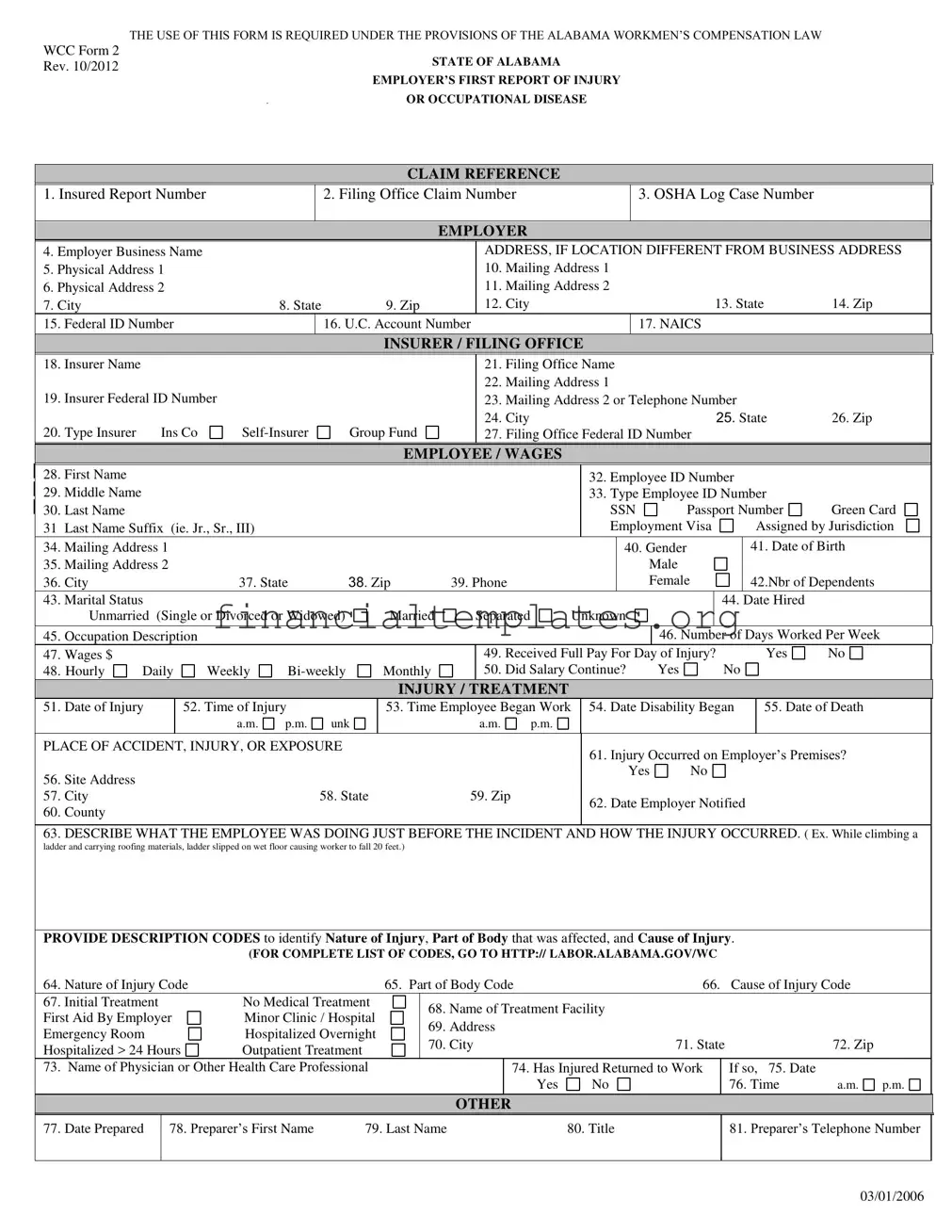The Federal Employer's Identification Number (FEIN) on the Alabama First Report form shares similarities with the IRS Form SS-4, Application for Employer Identification Number (EIN). Similar to how the Alabama First Report requires an employer's FEIN for identification, the IRS Form SS-4 is used by employers to apply for an EIN, ensuring their business is registered with the federal government for tax purposes. This critical number facilitates the processing of employee taxes and verification of the employer's identity, showcasing the importance of proper documentation and employer identification in both forms.
The section on the Alabama First Report form asking for details about the employee, such as name, identification number, and address, bears a resemblance to the information required on Form I-9, Employment Eligibility Verification. The purpose of Form I-9 is to document that each new employee is legally authorized to work in the United States. Both forms require detailed personal information to verify identity and employment eligibility, although for different legal purposes—one for workers' compensation claims and the other for employment eligibility verification.
Details regarding wages and salary continuation on the Alabama First Report form parallel the Wage and Tax Statement (W-2 form) used in the United States. While the Alabama form is utilized within the context of reporting an injury and determining compensation benefits, the W-2 form reports an employee's annual wages and the amount of taxes withheld from their paycheck. Both documents are crucial for accurate record-keeping and ensure that employees are fairly compensated, either through their wages or through compensation following a workplace injury.
The injury or occupational disease details required on the Alabama First Report form are analogous to what is found on the Occupational Safety and Health Administration's (OSHA) Form 300, Log of Work-Related Injuries and Illnesses. Both documents necessitate detailed descriptions of the injury or illness, how it occurred, and the severity. These parallels highlight the importance of maintaining precise records on workplace incidents to enhance safety protocols and ensure compliance with regulatory standards.
The requirement to list the nature of the injury, part of body affected, and cause of injury on the Alabama First Report form is reminiscent of the information collected in health insurance claim forms, such as the CMS-1500 used for Medicare and Medicaid. Both sets of documents require specific codes to categorize the nature and cause of injuries or illnesses for processing claims effectively. This coding facilitates a standardized method for health professionals and insurers (or employers in the case of the Alabama form) to communicate about injuries and treatments.
The details of the initial treatment listed in the Alabama First Report form align with the documentation found in patients' medical records. Like medical records, the Alabama form captures first treatment information, treatment facility details, and physician or healthcare professional names. This ensures that there is a record of immediate care provided for the injury, critical for both medical and compensation processes.
The Alabama First Report form's requirement for an insurer or filing office name and identification mirrors the information asked for in health insurance policy forms. These forms identify the insurer responsible for processing claims, similar to how the Alabama document identifies which insurance company or internal office is handling the workers' compensation claim. This identification is essential for streamlining the claims process and ensuring accountability.
The section asking whether the salary continues after the injury on the Alabama First Report form is similar to short-term disability claim forms used by private insurers. These forms often inquire about the employee's ability to work and whether they are receiving their regular salary during their recovery. Both documents recognize the financial impact of injuries on employees and aim to document compensation continuity or the need for benefit initiation during periods of work absence due to injury.

